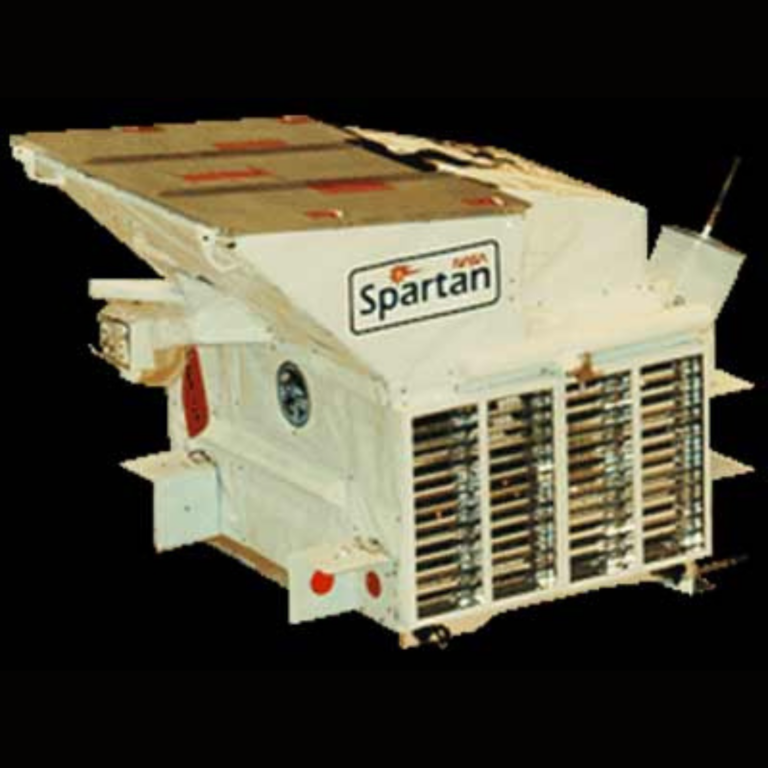SPARTAN Halley
Shuttle Pointed Autonomous Research Tool for Astronomy Halley
Set out to observe Halley's Comet

Spartan (Shuttle Pointed Autonomous Research Tool for Astronomy) Halley was an astronomical experiment to observe Halley’s Comet. The Spartan series consists of low-cost, Shuttle-launched, short-duration, sounding-rocket-type payloads. The payloads are retrievable and reusable with a turnaround time of approximately 6 to 9 months. The main objective of this spacecraft was to obtain UV spectra of the coma and tail of Comet Halley in January 1986 shortly before its perihelion. This spacecraft failed when Space Shuttle Challenger exploded shortly after launch.
Mission Class:
Mission Status:
LASP Roles:
Science Target:
Mission Focus:

Launch date: January 27, 1986
Prime mission: The mission was lost in the Challenger tragedy.
Lead Institute: NASA Goddard Space Flight Center
